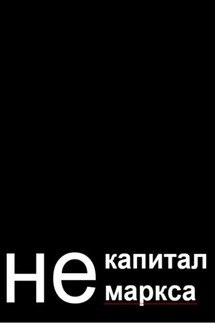The General Theory of Capital: Self-Reproduction of Humans Through Increasing Meanings - страница 40
Social production cannot be based on chance, it requires repeated results and is based on cultural experience and socio-cultural order. Historically, to determine the relationship between needs and products of actions, a notion of normal activity was developed. The norm is a socially determined action that must be performed to reproduce meaning. The plane of the norm connects the plane of content and that of expression and includes both figurae of content and figurae of expression. There is a temptation to equate minimal actions with meanings as such. However, an individual meaning s should not be reduced to the minimal action s*, since it always includes “redundant” figurae of expression and content—the remains of the past and the sources of the future, mistakes and successes of learning or creativity.
We call the mass of meaning the number of figurae in a single meaning, that is, the length of the string L(s) that includes the “redundant” figurae. On the one hand, the mass of meaning depends on the individual characteristics of the acting subject. On the other hand, the necessary mass of meaning depends on the general standard of action. The socially necessary mass of meaning corresponds to the notion of “normal” productivity, defined as the relation of complexity, efficiency and intensity of meaning, where intensity is the number of repetitions of an action per unit of time.
Productivity is the relation of the result of an activity to its actor, process and means. It is a juxtaposition of meaning against itself, a comparison of an action and its result. The nature of meaning implies a certain contradiction, a consistency or inconsistency between an action and its result. One could say that productivity is an indicator of meaningfulness—insofar as meaning can be reduced to the result of an action.
To increase productivity often requires more action, but people are generally unwilling to do more. The principle of least action is one of the fundamental laws of human history:
“Once a particular agricultural system reaches the limits of its productivity, people can decide to migrate, to stay and stabilize their numbers, to stay and let their numbers decline—or to adopt a more productive way of farming. The last option may not be necessarily more appealing or more probable than the other solutions, and its adoption is often postponed or chosen only reluctantly because such a shift almost invariably requires higher energy inputs—in most cases of both human and animal labor. Increased productivity will support larger populations by cultivating the same (or even smaller) areas, but the net energy return of intensified cropping may not increase and may actually decline. Reluctance to expand permanently cultivated land (a choice that entailed higher energy inputs, beginning with the clearing of primeval forests, the draining of swamps, or the building of terraced fields) led to much delayed reclamation of marginal lands” (Smil 2017, pp. 49-50).
Every technology requires the use of energy, but changes in complexity do not depend on changes in the amount of energy used. Mastering more energy does not necessarily lead to an increase in meanings: technologies, organizations and psychologies. “…A deterministic linking of the level of energy use with cultural achievements is a highly arguable proposition” (Smil 2017, p. 3). The fact is that the complication of meanings is often based on social and abstract technologies, the development of which does not require large energy inputs:







